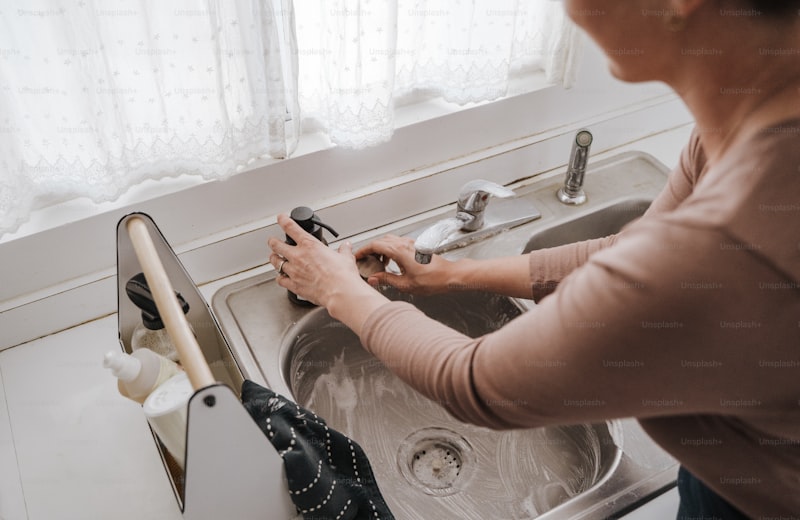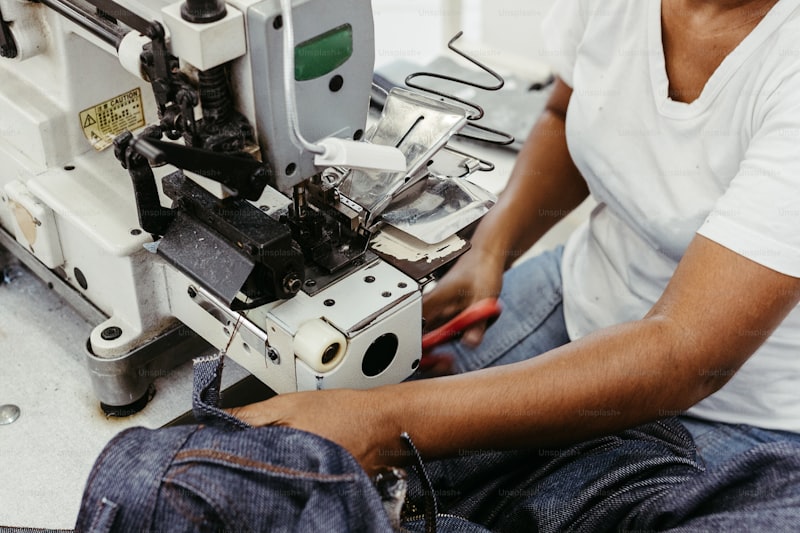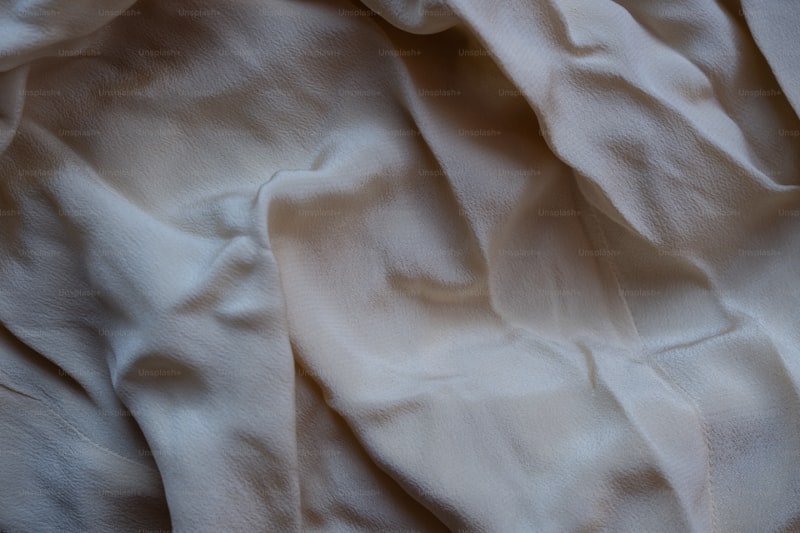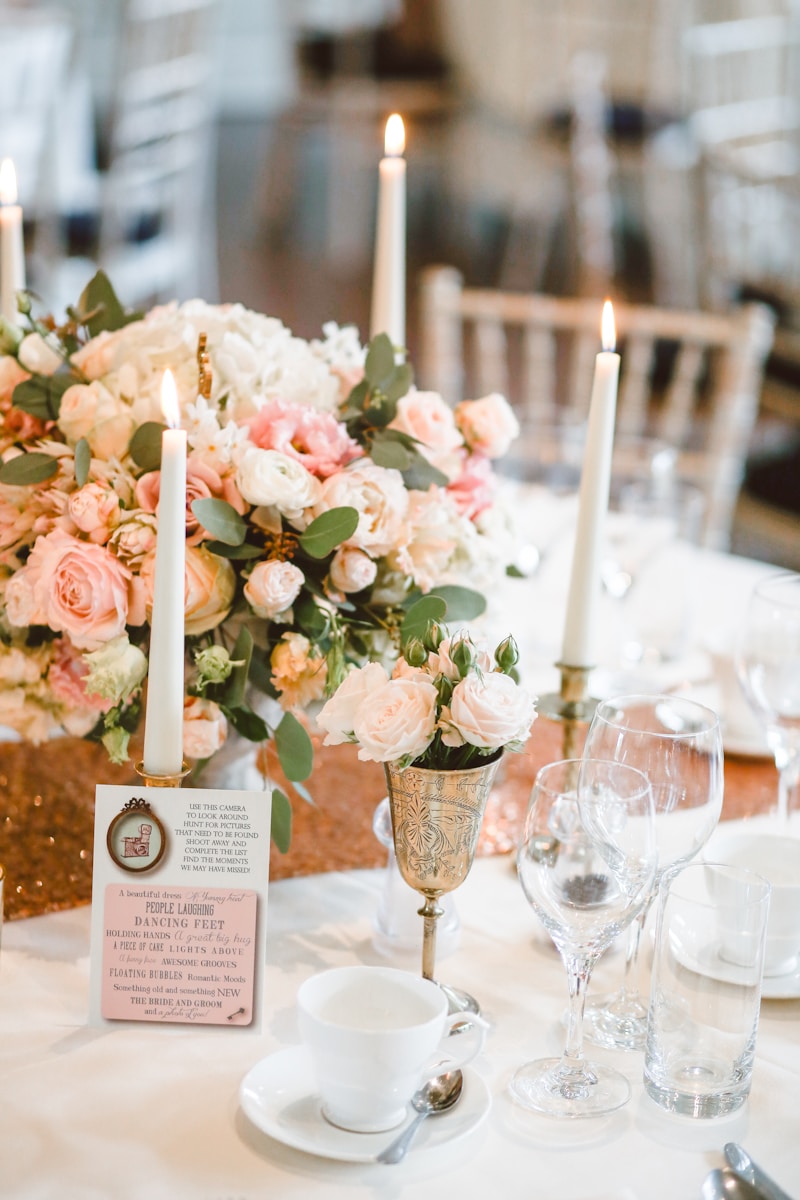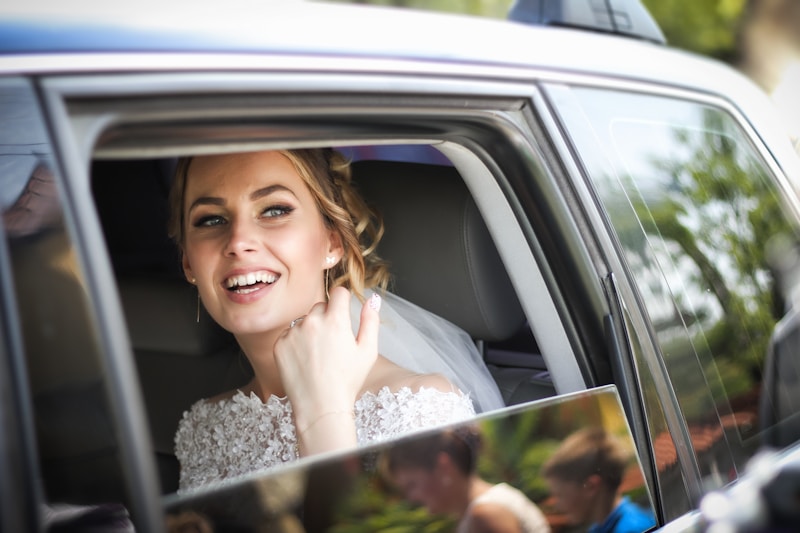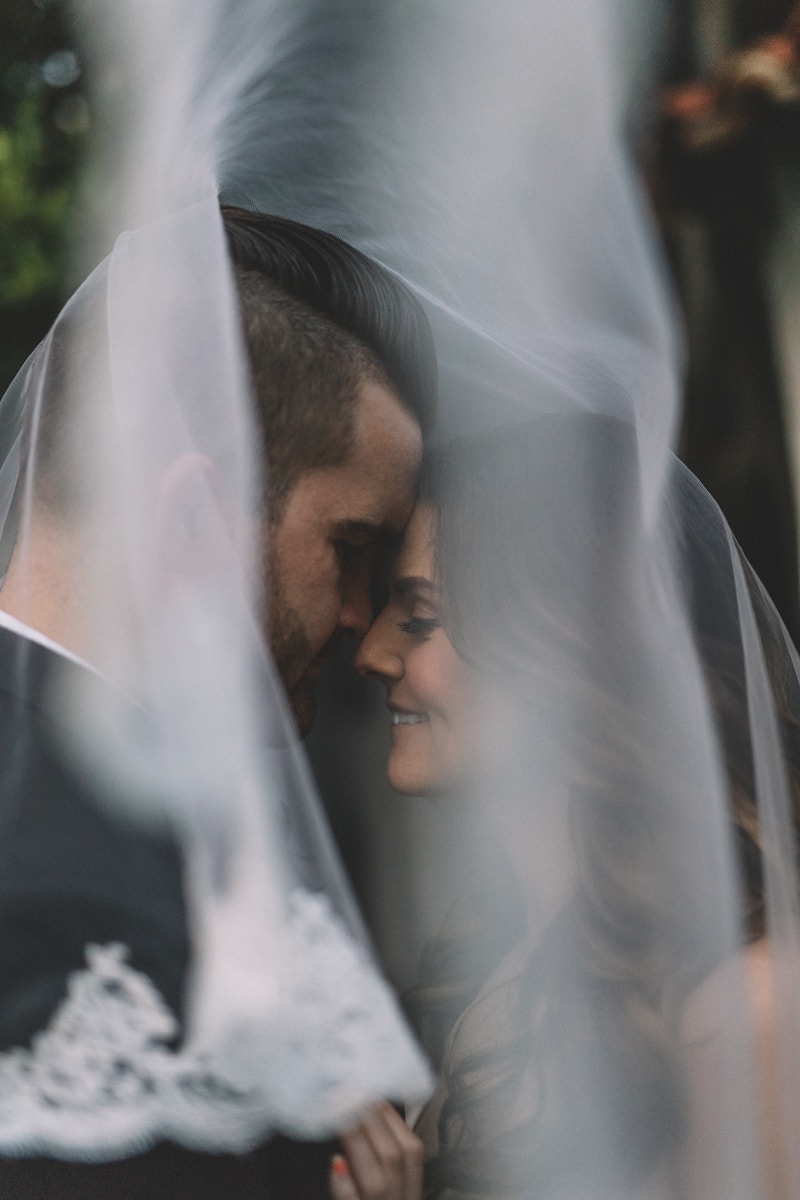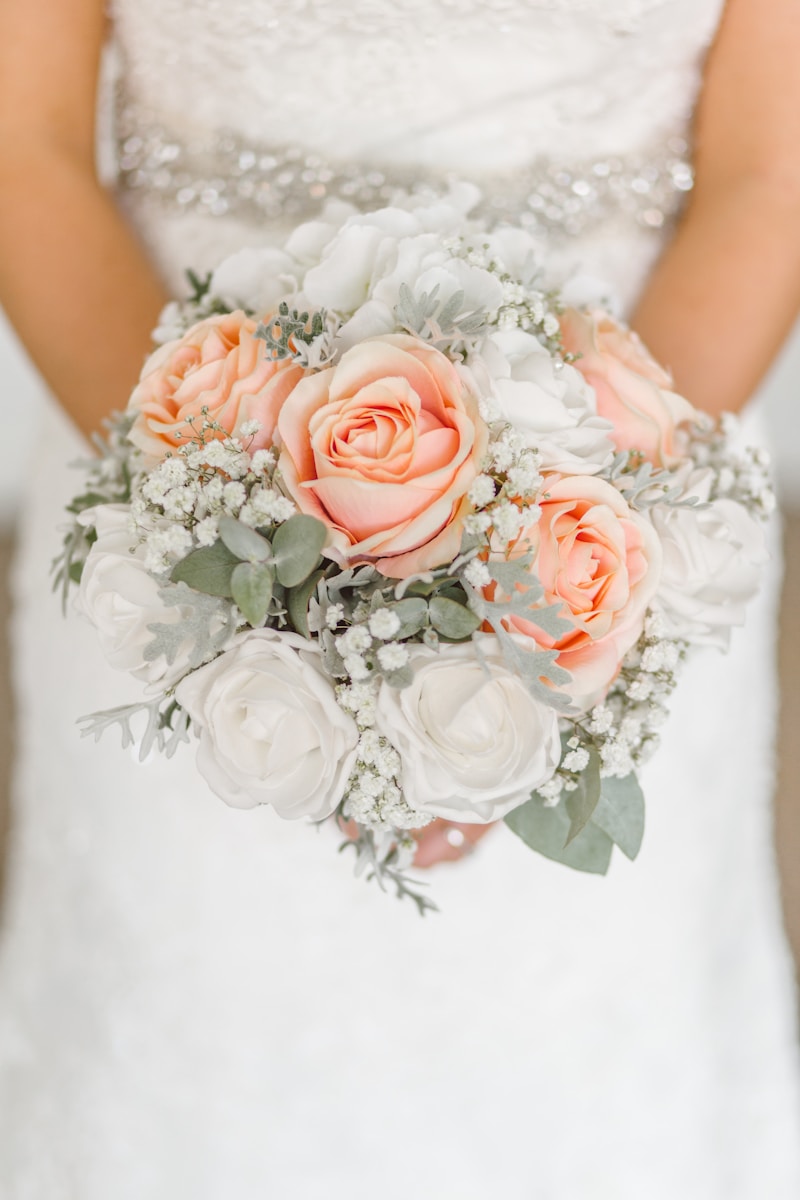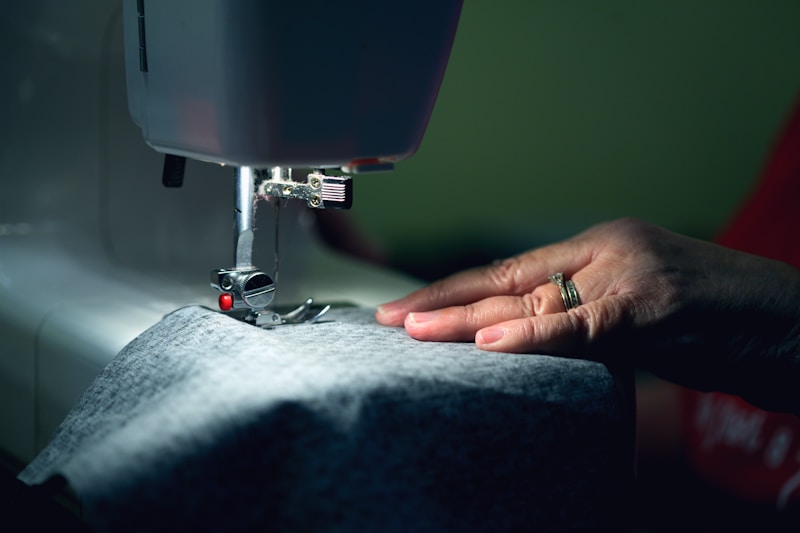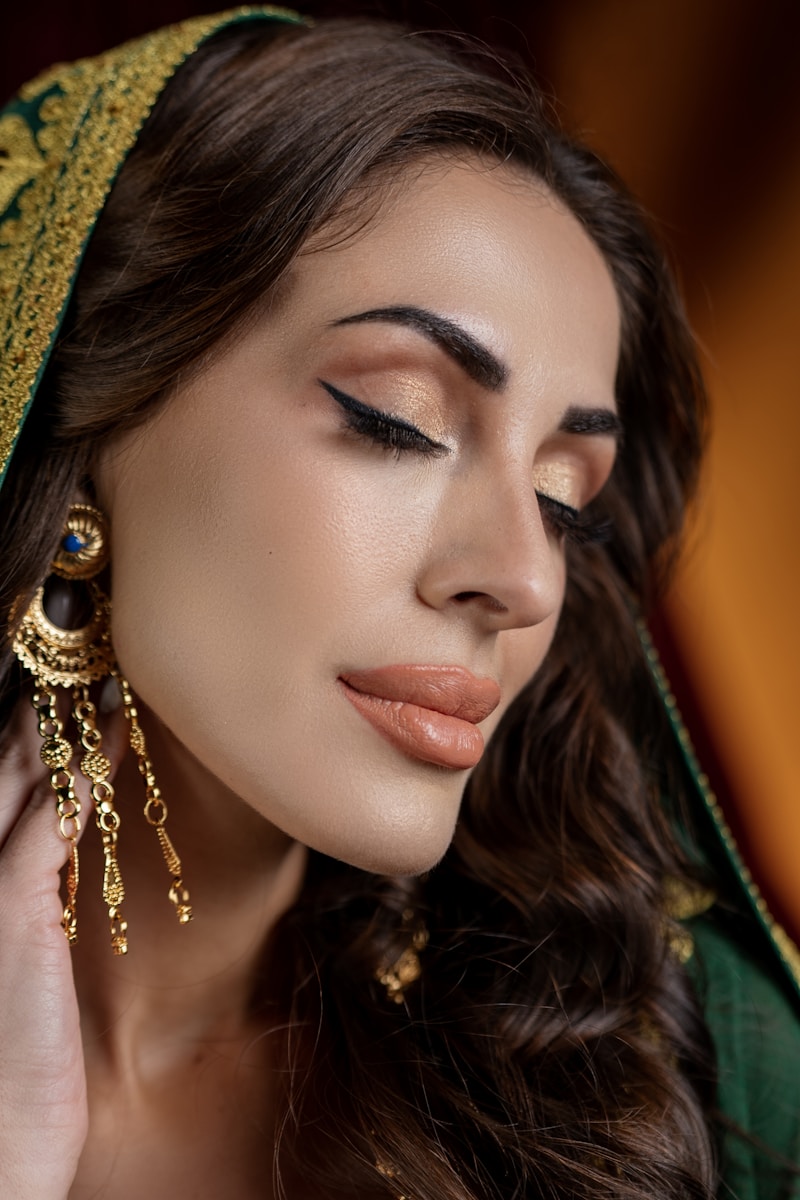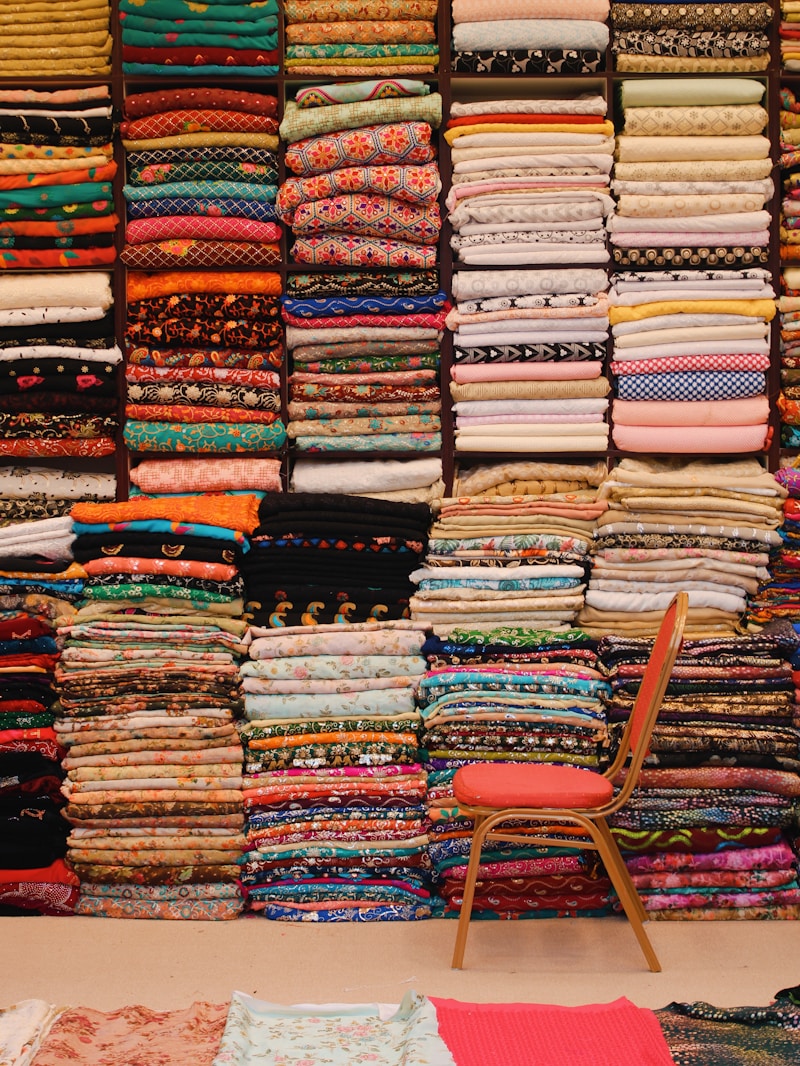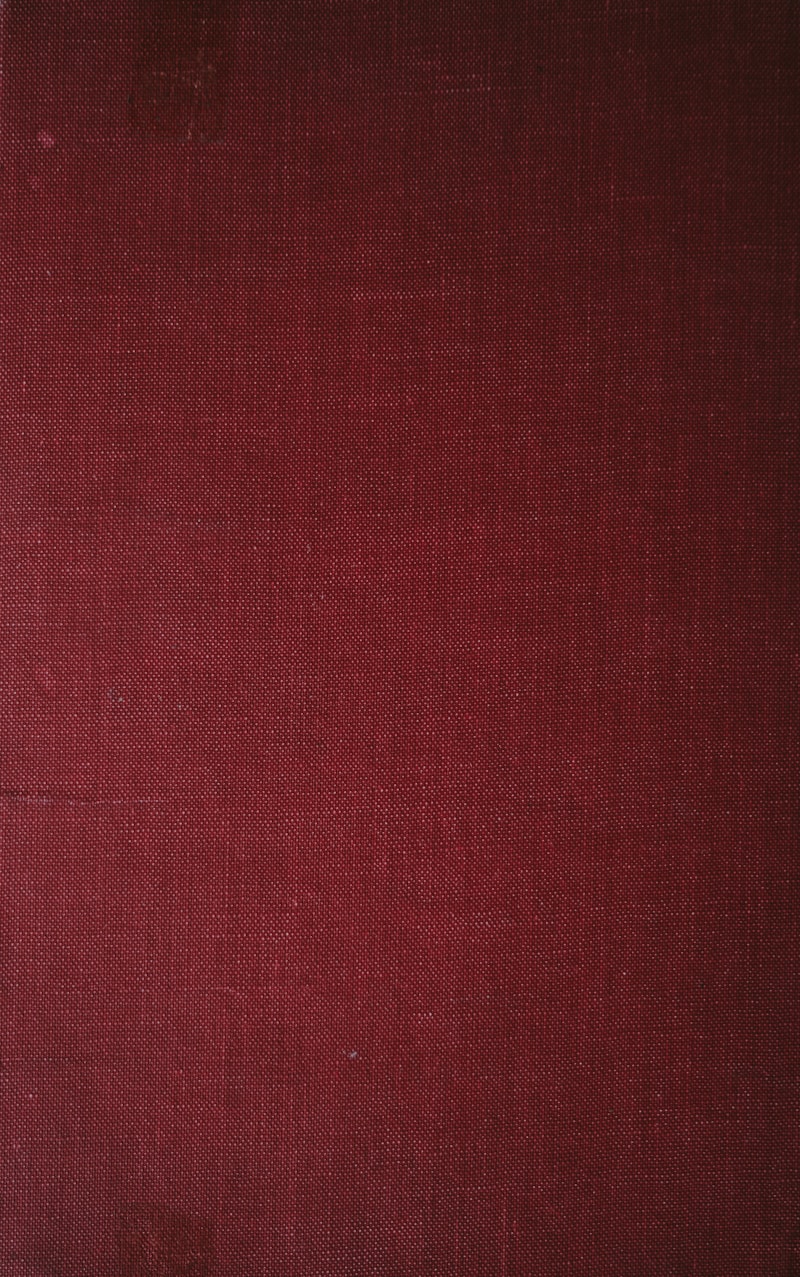Unlocking the Benefits of Specialized Cleaning Services for Your Home and Business
The Rise of Specialized Cleaning ServicesIn recent years, the demand for specialized cleaning services has surged significantly. Homeowners and businesses alike are increasingly recognizing the value of cleaning services tailored to specific needs. This article will explore various aspects of specialized cleaning services, their benefits, and how they can transform your living and working spaces.Understanding Specialized Cleaning ServicesSpecialized cleaning services refer to professional cleaning tailored to particular environments or situations. This includes but is not limited to: Carpet and upholstery cleaning Post-construction cleaning Commercial-grade cleaning Eco-friendly cleaning services Medical and pharmaceutical cleaning Restoration services (water, fire damage)Unlike standard cleaning services, specialized cleaning services use advanced techniques and equipment designed to target unique cleaning challenges faced by homes or businesses.Why Choose Specialized Cleaning Services?Opting for specialized cleaning services comes with a plethora of benefits. Here are some compelling reasons you should consider: Benefits Description Expertise Cleaning specialists have undergone training to handle specific tasks effectively. Efficiency Specialized services often complete tasks quicker due to targeted approaches. Equipment They use state-of-the-art equipment tailored for spec...
Gentle Washing Methods: The Ultimate Guide to Caring for Your Fabrics
Understanding Gentle Washing MethodsWhen it comes to maintaining the quality and longevity of your clothes, proper washing techniques are paramount. In a world where fast fashion has become the norm, many individuals overlook the importance of employing gentle washing methods. This article delves into various gentle washing techniques and why they are essential for preserving your garments.The Importance of Gentle WashingGentle washing methods focus on minimizing wear and tear on fabrics, which can be crucial for both delicate and everyday clothing. Here are some key reasons why you should consider adopting these methods:Longevity: Gentle washing helps extend the lifespan of your garments.Fabric Care: Certain fabrics, such as silk and wool, require special care to maintain their structure.Environmental Impact: Using less aggressive detergents and lower temperatures can reduce your carbon footprint.Common Gentle Washing TechniquesNow, let's explore some popular gentle washing methods that you can easily integrate into your laundry routine.1. Hand WashingOne of the oldest and simplest methods of washing clothes is by hand. This method is especially suitable for delicate fabrics. Follow these steps for effective hand washing:Fill a basin with lukewarm water.Add a gentle, fabric-friendly detergent.Submerge the garment and gently agitate it with your hands.Rinse thoroughly with cold water.Gently press the water out without wringing the fabric.2. Using a Mesh Laundry BagIf you pref...
Ultimate Guide to Fabric-Safe Detergents: Your Essential Guide for Gentle Cleaning
When it comes to keeping your clothes and fabrics pristine, selecting the right detergent is crucial. Fabric-safe detergents have become increasingly important as more people recognize the impact of harsh chemicals on delicate fabrics and the environment. In this comprehensive guide, we'll explore what fabric-safe detergents are, their benefits, how to choose the right ones, and tips for washing various types of fabrics. What Are Fabric-Safe Detergents?Fabric-safe detergents are specifically formulated to clean fabrics without damaging the fibers or color. Unlike traditional detergents that may contain harsh chemicals or additives, these detergents use gentle yet effective cleaning agents to preserve the integrity and longevity of your fabrics. They are suitable for a wide range of materials, including: Delicate fabrics like silk and lace Wool and cashmere Synthetic blends Colorful and printed fabricsBenefits of Using Fabric-Safe DetergentsChoosing fabric-safe detergents comes with numerous advantages:BenefitDescriptionGentle on FabricsFabric-safe detergents are designed to be mild, preventing wear and tear on delicate items.Vibrant ColorsThese detergents help maintain the brightness of colors, preventing fading.Allergy-FriendlyMany fabric-safe detergents are hypoallergenic and free from harsh fragrances, making them ideal for sensitive skin.Eco-Friendly OptionsSeveral fabric-safe detergents use biodegradable ingredients, reducing their impact on the environment.Key Featu...
Unlocking the Secrets of Professional Garment Restoration
Understanding Professional Garment RestorationIn today's fast-paced fashion world, maintaining the longevity of garments is a challenge many face. The solution lies in professional garment restoration, which not only revives the look of your cherished pieces but also extends their lifespan. Whether it's a vintage dress, a designer suit, or everyday wear, this restoration process is a game-changer for anyone looking to keep their wardrobe in pristine condition.What is Professional Garment Restoration?Professional garment restoration refers to the meticulous process of repairing and revitalizing clothing items that have suffered from wear and tear, stains, or damage. This can include cleaning, repairing, and restoring the original design, ensuring that garments look as good as new. It’s an art that combines craftsmanship with technical skill, often requiring the expertise of trained professionals who understand fabric types, dye applications, and stitching techniques.Why Choose Professional Garment Restoration?Choosing to restore rather than replace clothing comes with numerous benefits: Cost Efficiency: Restoring garments is often more economical than purchasing new ones, especially luxury items. Environmentally Friendly: By restoring your clothes, you contribute to sustainable fashion practices and reduce waste. Sentimental Value: Many garments carry memories; restoration allows you to retain and cherish those pieces. Quality Enhancement: Professionals can enhance the ove...
Mastering Swedish Garment Care: Tips and Tricks for Long-lasting Clothing
Introduction to Swedish Garment CareThe intricacies of garment care can often determine the longevity and appearance of your clothes. With the rise of sustainable fashion and eco-consciousness, understanding how to care for your garments the Swedish way can significantly impact not only your wardrobe but also the environment. This article delves deep into the principles of Swedish garment care, emphasizing practical techniques, minimal environmental impact, and ways to enhance the lifespan of your clothes.Understanding the Swedish Approach to Garment CareIn Sweden, garment care is not just a chore but a lifestyle choice rooted in sustainability and respect for quality apparel. The principles of Swedish garment care revolve around three main pillars: responsible consumption, proper maintenance, and repair culture.Responsible ConsumptionIn Sweden, consumers are encouraged to invest in high-quality pieces rather than fast fashion. This shift towards sustainable brands means that every garment you buy is often ethically sourced and crafted to last. The Swedish garment care philosophy advocates for a thoughtful purchasing process, selecting items that fit well and are made of durable materials.Proper MaintenanceOnce you have invested in quality garments, proper maintenance is crucial. Here are some key practices:PracticeDescriptionWashingAlways follow the care labels. Washing at lower temperatures and using eco-friendly detergents can reduce damage and energy consumption.DryingAir...
Mastering Dry Cleaning Essentials: Your Ultimate Guide to Keeping Clothes Pristine
Introduction to Dry Cleaning EssentialsDry cleaning is an essential process for maintaining the quality and longevity of delicate garments. Many people may wonder what dry cleaning essentials are and how to effectively navigate this vital service. In this comprehensive guide, we will delve into the aspects of dry cleaning, offering you insights into tools, techniques, and tips to ensure your clothes remain in pristine condition.What is Dry Cleaning?Dry cleaning is a process of cleaning clothes without the use of water. Instead, it employs chemical solvents, primarily perchloroethylene, to remove stains, dirt, and odors from fabrics. This method is especially beneficial for garments that cannot withstand the rigors of traditional washing, such as silk, wool, and delicate synthetics.Why Choose Dry Cleaning?Many people opt for dry cleaning due to its effectiveness and gentleness on clothes. Here are several reasons why dry cleaning might be the best choice for your garments: Removal of Stains: Dry cleaning excels at removing stains that water-based washing can exacerbate. Preserves Fabric Quality: It helps retain the original texture and shape of clothes. Fragrance: Clothes often come back with a fresh smell that regular washing can’t replicate.Essential Dry Cleaning SuppliesWhile you might think that dry cleaning is solely for professionals, there are several essentials you can utilize at home. Here’s a breakdown of the key supplies:SupplyDescriptionDry Cleaning SolveA speci...
Ultimate Guide to Silk and Lace Cleaning: Tips and Techniques for Timeless Elegance
Understanding Silk and Lace CleaningWhen it comes to caring for delicate fabrics like silk and lace, proper cleaning is paramount. Whether it's a cherished wedding gown, a vintage lace tablecloth, or elegant silk curtains, knowing how to preserve these materials can ensure they remain beautiful for generations. In this guide, we'll explore effective methods for silk and lace cleaning, tips to avoid damage, and when to seek professional help.Why Is Silk and Lace Cleaning Important?Silk and lace are luxurious fabrics that require special care. They are typically more sensitive to moisture, temperature, and cleaning agents than standard fabrics. Here are a few reasons why cleaning these materials properly is essential: Preservation of Fabric Longevity: Proper care can extend the life of these delicate materials. Protection from Stains: Untreated stains can set in and make items unwearable or unusable. Maintain Aesthetics: Regular cleaning helps fabrics maintain their color and sheen.Identifying Silk and Lace FabricsBefore you begin cleaning, it's crucial to identify whether the fabric is genuine silk or lace. Here’s how you can distinguish them: Silk: Genuine silk has a soft, smooth texture and a natural sheen. It can be tested by burning a small thread - if it smells like burnt hair, it's silk. Lace: Lacemaking techniques can vary, but genuine lace typically has intricate patterns and is delicate in nature. Testing can be harder; sometimes consulting a profession...
Uncovering the Mystery of Invisible Stains on Wedding Attire
Weddings are one of the most cherished events in our lives. Every detail matters, especially the attire. However, many couples overlook a crucial factor that can ruin the day: invisible stains on wedding attire. This article delves into the causes, detection, and prevention of invisible stains, helping you ensure that your special day is as flawless as it should be.Understanding Invisible StainsInvisible stains refer to marks or discolorations on garments that are not immediately noticeable. These stains can come from various sources, including food, drinks, makeup, or even environmental factors. Although they may not be visible initially, they can become more prominent over time, particularly when exposed to sunlight or cleaned improperly.Common Types of Invisible StainsType of StainSourceVisibilityOilCooking oils, skin oilsUsually invisible until cleanedMakeupFoundation, lipstickOften undetectableFoodSauces, greaseMay remain hiddenWaterHumidity, spillsCan cause discolorationUnderstanding the sources of invisible stains can help in addressing them effectively. This knowledge is particularly relevant for wedding attire, as bridal gowns, tuxedos, and bridesmaid dresses easily accumulate these stains, creating a potential nightmare if not managed well.Why are Invisible Stains Important?You're probably wondering why invisible stains pose such a risk to wedding attire. The truth is, stains can significantly impact the aesthetic and visual appeal of your wedding wardrobe. The foll...
Essential Wedding Dress Hygiene Tips for Every Bride
Your wedding day is one of the most significant moments of your life, and your wedding dress is not just a piece of clothing; it’s a symbol of love and commitment. Ensuring that your wedding dress remains in pristine condition before, during, and after the ceremony is crucial. One key aspect that many brides overlook is the hygiene of the wedding dress. This article will provide essential wedding dress hygiene tips to help you keep your gown looking its best while addressing common questions and concerns brides may have.Why Wedding Dress Hygiene MattersWedding dresses can be delicate and expensive, often made with luxurious fabrics. Proper hygiene is essential not only for aesthetics but also for your comfort. A clean dress can prevent potential skin irritations and help you feel confident on your big day. Below, we’ll explore the important areas of wedding dress care, from pre-wedding preparations to post-wedding cleaning.Pre-Wedding Hygiene Tips1. Select a Clean EnvironmentWhen you try on your wedding dress, ensure that the area is clean. Whether it’s a bridal boutique or your home, a clean environment minimizes the chances of dust and dirt transferring to your gown. Additionally, consider wearing clean, lint-free clothing when trying on the dress.2. Proper StorageWhen you receive your wedding dress, its storage is vital. Store the dress in a breathable garment bag away from direct sunlight and moisture. Do not hang it on a plastic hanger; instead, use padded hangers to avo...
Unlock the Secret to Affordable Cleaning Solutions: A Comprehensive Guide
Introduction to Affordable Cleaning SolutionsIn today's fast-paced world, maintaining a clean and organized space can often seem daunting, especially on a budget. However, affordable cleaning solutions are accessible to everyone. Whether you are a busy professional, a parent, or a student, keeping your environment tidy doesn’t have to break the bank. This article will explore various affordable cleaning solutions, tips for efficient cleaning, and essential products that you can easily incorporate into your cleaning routine.Understanding the Need for Affordable Cleaning SolutionsCleaning can be a costly endeavor when you consider the expenses associated with commercial cleaning products and services. Many people struggle to find a balance between affordability and effectiveness. Understanding why affordable cleaning solutions are essential can help you choose wisely:Budget-Friendly: Many cleaning products can be expensive. Affordable solutions can keep your costs low.Health and Safety: Eco-friendly and affordable solutions can be safer for families and pets.Effectiveness: Surprisingly, many DIY cleaning remedies are just as effective as their commercial counterparts.Types of Affordable Cleaning SolutionsTypeDescriptionDIY Cleaning SolutionsHomemade cleaners using everyday ingredients like vinegar, baking soda, and lemon juice.Multi-Purpose CleanersAffordable cleaners that can be used on various surfaces, reducing the need for multiple products.Eco-Friendly OptionsCleaning prod...
Essential Guide to Dress Insurance for Brides: Protecting Your Dream Dress
What is Dress Insurance for Brides?When planning a wedding, there are countless details to consider, and one of the most significant is the bridal dress. For many brides, this dress represents not just a piece of clothing but a treasured memory of a monumental day. Unfortunately, accidents can happen. This is where dress insurance for brides comes into play, offering peace of mind when it comes to protecting your cherished wedding attire.Understanding Dress InsuranceDress insurance is a specialized form of coverage designed to protect your wedding gown against various unforeseen circumstances, like damage, theft, or loss. While a wedding dress can cost anywhere from hundreds to thousands of dollars, having insurance can ensure that you aren’t left burdened by financial worries during what should be one of the most joyful times of your life.Why Do Brides Need Dress Insurance?Wedding preparations can be stressful, and the last thing you want to worry about is the safety of your gown. Here are some compelling reasons why brides should consider dress insurance: Financial Protection: The average wedding dress can range from $1,000 to $3,000 or more, meaning you’d want to ensure it is secured. Coverage Against Damage: Spills, tears, or alterations gone wrong can happen in an instant. Theft Coverage: Unfortunate situations like theft, especially when traveling or at a venue, can ruin your day. Added Peace of Mind: Knowing you are covered can help alleviate the overall st...
Eco-Friendly Wedding Dress Cleaning: Preserve Your Memories Sustainably
Your wedding dress is one of the most cherished garments you will ever own. Not only does it represent one of the happiest days of your life, but it also holds sentimental value for years to come. However, the traditional cleaning methods for wedding dresses can potentially harm the environment. In this article, we will explore the importance of eco-friendly wedding dress cleaning and provide you with a comprehensive guide on how to preserve your dress sustainably.The Importance of Eco-Friendly PracticesAs awareness of environmental issues increases, many couples are turning to eco-friendly alternatives in various aspects of their weddings, including the cleaning of their wedding dresses. Traditional dry cleaning methods often use harsh chemicals that can be detrimental to both the environment and the health of those who handle them. On the other hand, eco-friendly wedding dress cleaning utilizes sustainable practices that are safe for the planet. Here’s why you should consider this option: Reducing Environmental Impact: Eco-friendly cleaning methods minimize chemical pollution and waste, ensuring that your precious dress is cleaned without harming the ecosystem. Healthier Alternatives: Eco-friendly cleaning solutions are formulated with non-toxic ingredients that are safe for you and your family. Preserving the Fabric: Gentle cleaning methods protect delicate fabrics from wear and tear, ensuring that your wedding dress remains as beautiful as the day you wore it.Eco-Frien...
Exploring Storage Options After the Ceremony: A Comprehensive Guide
Weddings are a celebration of love, but they also come with their fair share of logistical challenges. One such challenge is determining how to handle the storage of items after the ceremony. Whether it's décor, gifts, or personal belongings, understanding your options for storage after the big day can save you time, stress, and money. In this article, we will explore various storage options after the ceremony to ensure you have everything sorted and stress-free.Understanding Storage Needs Post-CeremonyAfter the ceremony, couples often find themselves with a lot of items that require storage. This might include leftover decorations, wedding gifts, or even attire. Depending on the scale of your wedding and the items involved, you have various storage options available.Types of Storage Options1. At-Home StorageThe most straightforward approach is to utilize space at home. This option is often the most economical, as it incurs no additional costs. However, you’ll need to assess if you truly have enough space to accommodate everything.2. Self-Storage FacilitiesIf home storage isn't feasible, self-storage units represent a flexible solution. These facilities offer various unit sizes to cater to different needs.AdvantagesDisadvantagesSecure and climate-controlled options availableMonthly fees can add up over timeAccessibility whenever you need itTransportation to and from the facility can be cumbersomeAvailable in various sizesPotential for location constraints3. Renting a Storage ...
Ultimate Guide to Wedding Dress De-Wrinkling: Tips and Techniques for Perfecting Your Big Day Look
Your Wedding Dress: The Centerpiece of Your Special DayYour wedding day is one of the most significant events in your life, and the wedding dress is undoubtedly the centerpiece of this memorable occasion. A beautiful gown not only enhances your beauty but also captures the essence of love, joy, and celebration. However, a wedding gown can often arrive wrinkled or may develop creases during storage or transport, which can be a source of stress as your big day approaches. In this guide, we will explore various methods for wedding dress de-wrinkling to ensure that your dress looks impeccable.Understanding the Challenges of Wrinkles in Wedding DressesWedding dresses are usually made of delicate fabrics like silk, satin, chiffon, or lace, each prone to wrinkling due to their texture. Factors that can contribute to wrinkles include: Transportation of the dress from the store to your home. Improper storage before the wedding day. Environmental conditions such as humidity and heat.Why It's Essential to De-Wrinkle Your Wedding DressDe-wrinkling your wedding dress is crucial for several reasons: First Impressions: You want to look flawless as you walk down the aisle and during the ceremony. Photography: Wrinkles can show up in high-resolution photos, detracting from the overall beauty of your wedding album. Comfort: A wrinkle-free dress allows you to move freely and confidently, ensuring you enjoy your day to the fullest.Common Methods for Wedding Dress De-WrinklingNo...
Preserving Memories in Fabric: A Timeless Approach to Cherishing Life's Most Precious Moments
In our fast-paced world, memories often fade away before we can truly appreciate them. However, one innovative way to preserve those cherished moments is by using fabric. The art of preserving memories in fabric allows individuals to create lasting mementos that evoke emotions and tell stories. In this article, we will explore various methods of memory preservation through fabric, the benefits of this approach, and how you can start your journey to keep your memories alive.What Does It Mean to Preserve Memories in Fabric?Preserving memories in fabric means creating tangible items that encapsulate sentimental moments and experiences. This can involve sewing, embroidery, or using photographs printed on fabric to craft quilts, wall hangings, or even clothing. Each piece becomes a storytelling canvas, inviting memories of special occasions like weddings, graduations, or family gatherings.Why Choose Fabric for Memory Preservation?Fabric has unique attributes that make it an excellent medium for preserving memories. Here are several compelling reasons: Tactile Experience: Fabric has a comforting quality; touching a piece can evoke memories and emotions attached to it. Longevity: With proper care, fabric items can last for decades, serving as lasting reminders of significant moments. Creativity: Crafting with fabric allows for immense creativity; you can express your personality and memories in unique ways. Personal Connection: Creating memory fabric pieces often involves a pers...
Accessorizing with Bridal Care: Elevate Your Wedding Day Look
Your wedding day is one of the most important milestones in your life, and every bride dreams of looking flawless. While the dress generally takes center stage, accessorizing with bridal care can truly elevate your look, making you feel radiant and confident. In this article, we’ll explore the various ways you can enhance your bridal appearance through thoughtful accessorizing and essential bridal care, ensuring your wedding day is unforgettable.The Importance of Accessorizing in Bridal CareAccessorizing is not merely about adding elements to your outfit; it’s about complementing your overall bridal aesthetic. The right accessories can enhance your gown, highlight your features, and complete your bridal look. Bridal care goes hand in hand with accessorizing, as it ensures your skin, hair, and nails are in perfect condition for the big day.Key Elements of Bridal CareBefore diving into accessorizing tips, let’s discuss essential bridal care tips to ensure you look and feel your best.1. Skin CareYour skin is your canvas on your wedding day. A proper bridal skin care routine should begin months in advance. Here are some key points to consider: Moisturize: Keeping your skin hydrated will make it look plump and healthy. Exfoliate: Regular exfoliation helps remove dead skin cells, leaving you with a radiant glow. Sunscreen: Protect your skin from sun damage to prevent unwanted blemishes.2. Hair CareYour hairstyle can set the tone for your entire look. Pay attention to your ...
Unlocking the Power of Custom Cleaning Solutions: Your Guide to Tailored Hygiene
Understanding Custom Cleaning SolutionsIn a world where hygiene and cleanliness are paramount, businesses and households alike are seeking effective ways to maintain pristine environments. Each establishment or residence has unique requirements, leading to the rise of custom cleaning solutions. These tailored approaches not only ensure cleanliness but also promote health and safety through targeted treatments.What Are Custom Cleaning Solutions?Custom cleaning solutions refer to specially designed cleaning services and products tailored to meet the specific needs of a client. These solutions can vary significantly based on the type of surface, the level of soiling, and the desired outcome. Whether it’s for commercial purposes, such as an office, warehouse, or industrial site, or for residential needs, such as deep cleaning carpets or sanitizing kitchens, custom cleaning solutions provide flexibility and efficiency.Why Choose Custom Cleaning Solutions?There are several reasons why businesses and homeowners should consider custom cleaning solutions: Tailored Approach: Every setting is different, and generic cleaning methods may fall short. Custom solutions address specific requirements. Enhanced Efficiency: Targeted cleaning strategies ensure that time and resources are used effectively, reducing waste. Improved Hygiene: Custom cleaning products can be formulated for specific germs or allergens, providing a healthier environment. Cost-Effectiveness: By avoiding unnec...
Unlocking the Future: Antimicrobial Treatments for Fabrics
Introduction to Antimicrobial TreatmentsIn today's fast-paced world, hygiene is of paramount importance, and it extends beyond our daily routines. With the rise of microbial threats, industries are constantly seeking innovative solutions to protect both consumers and products. One such solution is antimicrobial treatments for fabrics, which provide enhanced protection against bacteria, fungi, and other pathogens. This article will delve into the significance, applications, types, and future of these treatments, exploring various aspects that anyone interested in fabric care should know.Understanding Antimicrobial TreatmentsAntimicrobial treatments are chemical agents applied to fabrics to prevent the growth of microorganisms. These treatments work by interfering with microbial cell functions, leading to their inactivation or elimination. Given the increasing global focus on health and safety, antimicrobial fabrics are becoming a staple in numerous sectors, including healthcare, hospitality, and fashion.Why Antimicrobial Treatments MatterFabrics treated with antimicrobial agents offer several advantages:BenefitDescriptionOdor ControlPrevents the growth of bacteria that cause unpleasant odors.Enhanced DurabilityIncreases the life of textiles by protecting them from microbial damage.Improved HygieneReduces the risk of infections, particularly in healthcare settings.Market DifferentiationProvides a competitive edge for brands aiming to promote safe and clean products.Types of Ant...
Unlock the Best Color-Safe Stain Removers: Your Ultimate Guide
When it comes to maintaining the vibrancy of your clothes and fabrics, color-safe stain removers are a game changer. Whether you’ve spilled red wine on a white shirt or accidentally placed a napkin with blueberry jam on your favorite dress, having the right product can save your fabric’s hue without risking damage. This article will explore color-safe stain removers comprehensively, including their importance, how they work, and top-product recommendations to keep your garments looking fresh.What Are Color-Safe Stain Removers?Color-safe stain removers are specially formulated solutions designed to lift stains from colored fabrics without causing fading or discoloration. Unlike traditional bleach or harsh cleaning agents that can strip color, these products are gentle yet effective, ensuring your garments retain their original beauty.Why Use Color-Safe Stain Removers?Using color-safe stain removers is essential for several reasons: Preservation of Color: They help maintain the integrity of colored fabrics by preventing fading or discoloration. Effective Stain Removal: Formulated to target various stains, from food spills to grass marks, making them versatile. Fabric Safe: Most of these products are safe for a variety of fabrics, including wool, silk, and synthetic fibers.Common Ingredients in Color-Safe Stain RemoversUnderstanding what goes into these cleaning agents can help you choose the right product. Some common ingredients include:IngredientFunctionEnzymesBreak ...
Expert Guide to Fine Fabric Restoration: Techniques, Benefits, and Best Practices
In the world of interior design and textile care, fine fabric restoration plays a crucial role in maintaining the beauty and longevity of cherished fabrics. Whether you own a vintage sofa, a delicate curtain, or an heirloom textile, knowing how to properly restore these items can preserve their value and enhance your living space. This article delves into the techniques, benefits, and important considerations regarding fine fabric restoration.Understanding Fine Fabric RestorationRestoration refers to the process of repairing and revitalizing textiles to restore their original appearance. Fine fabric restoration focuses on high-quality materials such as silk, velvet, and linen that require specialized techniques. Understanding the types of fabrics is essential for effective restoration; improper care can lead to irreversible damage.Common Techniques in Fine Fabric RestorationThere are several techniques applied in fine fabric restoration, each tailored to specific types of fabrics and the extent of damage. Below are some of the most commonly used methods:TechniqueDescriptionCleaningProfessional cleaning methods, including dry cleaning and wet cleaning, adapted for delicate fabrics.RepairingPatching holes or tears using fabric matching techniques to ensure seamless restoration.Color RestorationUsing dyes or fabric-specific color enhancers to revive faded colors.Protective TreatmentsApplying fabric guards to add a protective layer against stains and spills.1. Cleaning Techniques...

